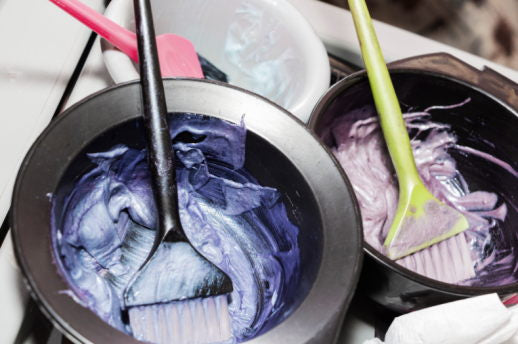Introduction
In the vast cosmos of hairstyling, hair extensions have emerged as a stellar solution for those seeking to transform their locks without long-term commitment. They bestow upon one the magic to flaunt a luxurious mane filled with volume, length, and vibrancy. Whether you're dreaming of luscious long locks, a bouncy bob, or colorful streaks, hair extensions can turn that dream into reality within minutes.
They are a boon when it comes to overcoming hair woes like thinning hair or a regretful haircut. The versatility they offer is unparalleled – they can be curled, straightened, and now, even colored to match or contrast with your natural hair, opening up a galaxy of styling possibilities.

Venturing into the realm of coloring hair extensions can be akin to navigating through uncharted territories. While the idea is enticing, the process requires a blend of the right knowledge, technique, and patience. The aim of this guide is to act as a compass in your coloring expedition, ensuring you achieve the hue you desire while keeping your extensions in prime condition. Whether you are a seasoned stylist or a newbie to the coloring world, this guide aims to provide a well-rounded understanding and step-by-step instructions on how to successfully color your hair extensions.
Understanding the Types of Hair Extensions
Before diving into the coloring process, it's essential to understand the different types of hair extensions available in the market. They primarily fall into two categories: synthetic and natural hair extensions.
Synthetic extensions are made from various artificial fibers and are generally more affordable. Dyeing synthetic hair extensions is not recommended due to the fundamental differences between synthetic and natural human hair. Synthetic extensions are crafted from plastic fibers, which lack the porous texture of natural hair that allows it to absorb and retain dye. Unlike human hair, synthetic hair has a smooth, non-porous surface that repels the liquid, making conventional hair dyes ineffective.
Furthermore, synthetic fibers are highly sensitive to heat, a factor often used to expedite the dyeing process in human hair, but in the case of synthetic hair, it can cause melting or severe damage. The chemical composition of traditional hair dyes is designed to interact with the natural proteins in human hair, but these chemicals have no effect on plastic fibers, often leading to uneven or barely visible color results. Some individuals resort to fabric dyes as an alternative, but this method can be messy, potentially harmful, and still not guarantee satisfactory or lasting results. Due to these challenges and the potential for disappointing outcomes, it's generally advised to avoid dyeing synthetic hair extensions.
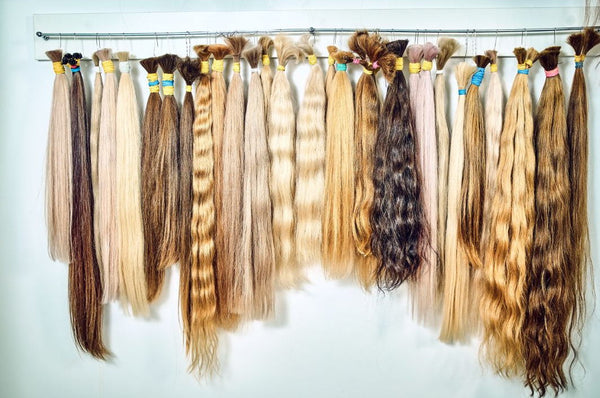
We, IMH Studio, located in Marbella, in the heart of the Costa del Sol, only sell and install natural virgin human hair for these reasons and many others. We strive to give our customers the best experience, hair extension services, and quality of hair. Let’s talk then about natural human extensions.
Natural hair extensions are made from real human hair, offering a more authentic look and a plethora of styling options.
- Invisible Weft Hair Extensions: Seamless extensions that are installed onto the hair in rows by using a Beaded Weft Track System. The wefts are placed onto the scalp and beaded into the hair
- Tape-In Extensions: They are semi-permanent, adhered to the roots of your hair using a bi-adhesive tape.
- Hand-tied Hair Extensions: Hand sewn into the hair by the stylist to deliver an invisible application, a voluminous appearance, and a comfortable hairstyle.
- Micro Beads and Nano Rings: Individual strands are attached to small sections of your natural hair using metal links.
- Fusion Extensions: They are bonded to the natural hair using different adhesives like keratin, glue, or other bonding materials.
Human Hair Extensions for Coloring
Human hair extensions are your best bet when it comes to coloring. Unlike synthetic extensions, human hair extensions react to coloring products similarly to how your natural hair would, making them a more predictable and manageable option. They absorb and retain color well, and with proper care, the color can last a considerable amount of time without fading. Furthermore, they can be dyed multiple times, allowing for color corrections or changes down the line.
Quality and Characteristics of Remy and Virgin Hair Extensions
Diving deeper into the realm of human hair extensions, Remy and virgin hair extensions represent the crème de la crème of quality.
- Remy Hair Extensions: Remy hair is considered a high-quality type of human hair extensions. The cuticles in Remy's hair are kept intact and run in the same direction from root to tip, which minimizes tangles and mimics the natural hair's behavior. This alignment also ensures that the hair reflects light in a certain way, maintaining a natural sheen, which is vital for a natural-looking color outcome.
- Virgin Hair Extensions: Virgin hair is the epitome of purity in the hair extensions world. It has never been chemically processed in any way, making it the most natural, healthy, and durable type of hair extensions available. The untouched nature of virgin hair makes it the ideal candidate for coloring as it absorbs dye very well, and the results are often more vibrant and long-lasting.
Understanding the type and quality of your hair extensions is the first step toward a successful coloring experience. It sets the stage for what to expect and how to approach the coloring process to achieve desired results while preserving the health and integrity of the extensions.
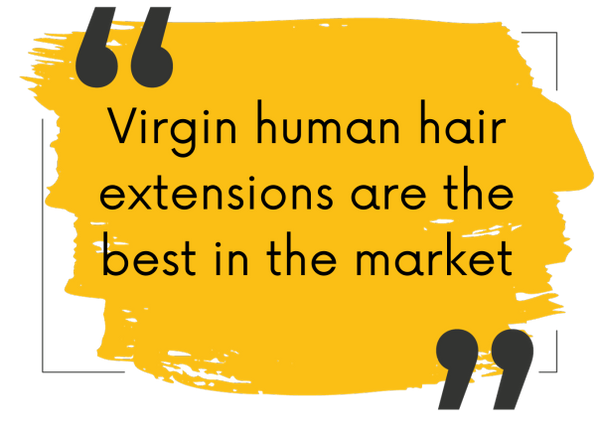
At our esteemed establishment, we take immense pride in offering High-Quality Human Virgin Hair Extensions to our discerning clientele. Our unwavering commitment to quality ensures that when you choose our extensions, you are investing in a luxurious, long-lasting product that epitomizes natural elegance.
Preliminary Considerations Before Coloring
Importance of a Strand Test
Venturing into the realm of coloring, whether it be your natural hair or extensions, comes with its share of uncertainties. One of the prime ways to mitigate the risk of unexpected outcomes is by conducting a strand test. A strand test involves applying your chosen dye to a small section of the extensions to observe how the color develops.
This critical preliminary step serves as a window into how the extensions will react to the dye, providing a glimpse of the final color and allowing for any necessary adjustments before committing to coloring the entire set. Moreover, it’s a prudent way to avoid potential disappointment and waste of resources. By performing a strand test, you set realistic expectations and prepare yourself for the coloring journey ahead.
Color Choice, Emphasizing the Ease of Darkening Over Lightening
Color choice is a pivotal decision that can significantly impact the outcome and the health of your hair extensions. It's commonly advised to opt for a color that is the same shade or darker than your current color. Darkening hair extensions is a relatively straightforward process that typically involves less risk and damage compared to lightening. On the flip side, lightening or bleaching the extensions is a harsh process that strips away the natural color and can degrade the quality of the hair, leading to dry, brittle extensions.
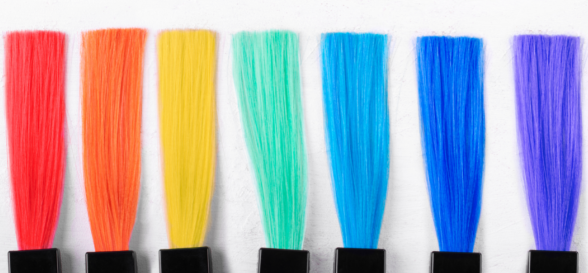
If a lighter color is desired, it's often better to purchase lighter-colored extensions initially and then add color if needed. This discussion is not to dissuade from exploring lighter hues but to shed light on the complexities involved and approach the process cautiously and thoughtfully.
The Value of Professional Consultation for Beginners
If you are a novice in the world of hair coloring, seeking professional consultation is a wise and valuable step. Professionals come with a wealth of experience and knowledge that can be instrumental in guiding you toward the right color choices and processes.
They can provide personalized advice based on the type and condition of your hair extensions, ensuring you are well-equipped to achieve the desired color without compromising the integrity of the extensions. Furthermore, a professional can help you understand the nuances of coloring, from choosing the right dye to applying it correctly, which can be particularly beneficial for beginners.
Investing in professional consultation can be the difference between a successful coloring experience and a disappointing outcome. Hence, if coloring at home, especially for the first time, having a professional stylist’s input can be an invaluable asset on your coloring journey.
Preparing Your Extensions for Coloring
Washing and Drying the Hair Extensions to Remove Residues
The first step towards a successful coloring process is to prepare your extensions by ensuring they are clean and free from any residues. Any build-up of oils, styling products, or previous color treatments can hinder the dye from penetrating evenly, leading to a patchy color outcome.
Washing the extensions with a mild, sulfate-free shampoo will help strip away any impurities without overly drying the hair. It's important to handle the hair extensions gently while washing to prevent any tangles or damage. Post-washing, thoroughly dry your extensions. While air drying is the gentlest method, if you are short on time, a blow dryer on a low heat setting will do the trick. Ensure the extensions are completely dry before moving on to the next steps, as wet or damp hair can dilute the dye and affect the color result.
Detangling: Tools and Techniques
Detangling is a crucial step to ensure a smooth coloring process. Tangled hair extensions can lead to uneven color application and further tangling or damage. Using a wide-tooth comb or a special detangling brush, gently work through the extensions starting from the tips and gradually moving up towards the base.
If you encounter any knots, take your time to gently work through them without pulling or tugging. Your hair extensions should be smooth and free of tangles, ready for a seamless dye application. It's a small but significant step that can make the coloring process much easier and more effective.
The Importance of a Clean and Organized Workspace
Creating a clean and organized workspace before you begin the coloring process is essential for a hassle-free experience. A clutter-free area will allow you to focus solely on the task at hand without any distractions. Lay out all the tools and products you will need, such as the dye, applicator brushes, gloves, clips for sectioning, and plastic or foil sheets for placing the extensions on while they process.
Having everything within arm's reach will streamline the process, making it efficient and enjoyable. Additionally, covering your workspace with newspaper or disposable table covers will make cleanup a breeze. This preparatory step, although simple, can significantly impact the ease and success of your coloring endeavor, setting a positive tone for the creative journey ahead.
Selecting the Right Dye
Discussion on Various Types of Dyes
When it comes to coloring hair extensions, choosing the right dye is paramount to achieving the desired hue while maintaining the integrity of the hair. There are primarily three types of dyes to consider:
- Permanent Dyes: These dyes are formulated to last the longest, and they work by opening up the hair cuticle to remove the existing color and deposit the new color. While they offer a more lasting result, they can be quite harsh on hair extensions, which may already have undergone chemical processing.
- Demi-Permanent Dyes: Demi-permanent dyes deposit color without significantly altering the natural pigment of the hair. They are less damaging than permanent dyes and can be a good option for darker color changes or enhancing the existing color.
- Semi-Permanent Dyes: These dyes coat the surface of the hair rather than penetrating the cuticle. They are the least damaging and offer a temporary color change, which can be a fun way to experiment with different hues without the commitment.
Brands Known for Gentle and Vibrant Color Formulas
When it comes to choosing a brand, opting for those known for their gentle, vibrant, and high-quality color formulas is wise. Some reputable brands include:
- Wella Color Charm: Known for its wide range of colors and gentle formula, Wella is a go-to for many professionals and DIY colorists alike.
- Manic Panic: This brand offers a plethora of vibrant shades in a semi-permanent formula that is vegan and cruelty-free.
- Adore Creative Image: Adore is praised for its conditioning properties and array of beautiful, vibrant colors.
- Schwarzkopf Professional: Known for its professional-grade quality, Schwarzkopf offers a range of demi and semi-permanent colors that provide excellent coverage and vibrancy.
- Clairol Professional: Clairol’s range of dyes is known for providing rich color while being gentle on the hair.
Investing in a high-quality dye from a reputable brand will not only contribute to achieving a beautiful color but will also help ensure the longevity and health of your hair extensions.
The Coloring Process Unveiled
Section the Extensions for Ease of Application
The initiation of the coloring process begins with a well-organized approach to handling your extensions. Sectioning is a vital step that ensures an even application of dye across all strands. Divide the extensions into manageable sections, and secure them with hair clips. This will not only make the process less daunting but also more precise, ensuring each strand receives an adequate amount of dye for a uniform color outcome.

The technique of Applying Dye from Top to Bottom
With your extensions neatly sectioned, you're now ready to delve into the actual coloring. Using an applicator brush, start applying the dye from the top of the extensions, working your way down to the tips. This method ensures a smooth, even application and helps to avoid any potential tangles that could arise if done in the opposite direction.
Ensure that the dye is generously and evenly applied, and each section is fully saturated to avoid any patchy areas. Using a brush allows for a more precise application compared to using your hands, and it helps to distribute the dye evenly throughout the hair.
Timing and Monitoring the Processing to Achieve Desired Color
The importance of timing cannot be overstated in the coloring process. Adhere to the instructions provided on the dye packaging for the processing time. However, it's wise to check the color development at regular intervals by wiping away a small amount of dye from a section to see the color underneath. This will give you an insight into how the color is processing and whether you need to leave it on for the full development time or rinse it off earlier. Monitoring the processing time is crucial to achieving the desired color and avoiding over-processing which could lead to dry, brittle extensions.
Rinse and Conditioning: Ensuring the Longevity and Vibrancy of Color
Once the desired color has been achieved, it's time to rinse the dye out of the hair extensions. Rinse them thoroughly under lukewarm water until the water runs clear. Avoid using hot water as it can strip the color and dry out the hair extensions. Following the rinse, apply a sulfate-free, color-safe conditioner. This will help seal the color in, add moisture, and provide a protective barrier that helps maintain the color's vibrancy over time.
Allow the extensions to air dry, and once dry, enjoy the beautiful, freshly colored hair extensions that are ready to enhance your look. This final step of conditioning and proper drying is fundamental in ensuring the longevity and vibrancy of the color, setting the stage for a gorgeous and enduring color transformation.
Post-Coloring Care
Deep Conditioning and Hydrating Treatments
Coloring, while transformative, can be a taxing process on your hair extensions. It’s imperative to restore and retain the moisture that may have been lost during coloring. Engage in deep conditioning treatments to replenish the moisture and ensure your extensions remain soft and manageable.
Use a deep conditioning mask or a hydrating treatment at least once a week or as needed, depending on the dryness or the texture of the extensions. Applying a leave-in conditioner or a lightweight hair oil can also help in maintaining hydration levels, leaving your extensions looking glossy and healthy.

Routine Maintenance to Keep Extensions Looking Fresh
Routine maintenance is the cornerstone of ensuring the longevity and vibrancy of your colored extensions. Here are some tips to keep them looking fresh and fabulous:
- Wash Gently: When washing, use sulfate-free, color-protecting shampoos and conditioners to prevent color fading and to maintain the integrity of the extensions.
- Avoid Heat: Minimize the use of heat-styling tools. If you must use them, always apply a heat protectant to shield the extensions from potential damage.
- Store Properly: Store your extensions in a cool, dry place away from sunlight which can cause color fading. It's advisable to keep them in a protective casing to prevent tangles and preserve the style.
- Brush Regularly: Gently brush your extensions with a soft bristle brush or a wide-tooth comb to prevent tangles and keep them looking smooth and tidy.
For those readers interested in this topic we have a blog post that gets deep into this topic: The complete guide to Natural Hair Extensions Care - Make them last
When and How to Seek Professional Touch-Ups
Over time, even well-cared-for extensions may need a professional touch-up to revive the color or correct discoloration. If you notice the color fading or if your extensions look dull or lackluster, it may be time to seek professional help.
A professional stylist can accurately assess the condition of your extensions and provide the necessary color touch-ups to restore their vibrancy. They can also provide personalized advice on how to maintain the color and the overall health of your extensions based on your lifestyle and hair care routine. Remember, while at-home care is essential, professional touch-ups are the key to maintaining the high-quality look and feel of your colored extensions over time.
Troubleshooting Common Coloring Mishaps
Addressing Uneven Color
Uneven color is a common mishap that can occur when dyeing hair extensions.
 This may arise from insufficient dye application, hasty process, or not sectioning the hair properly. To remedy uneven color:
This may arise from insufficient dye application, hasty process, or not sectioning the hair properly. To remedy uneven color:
- Identify the Issue: Understand where the color is uneven – is it patchy throughout, or is the unevenness localized to specific areas?
- Section and Apply: Section the hair extensions properly and re-apply the dye to the uneven areas, ensuring that the dye is fully saturating the strands.
- Process Again: Allow the dye to process for the recommended time, then rinse and condition the extensions thoroughly.
Solutions for Over-Processed Extensions
Over-processing occurs when extensions are left with dye for too long, subjected to too many chemical processes, or exposed to harsh dyes. Over-processed extensions may feel dry, brittle, and dull. Here’s how to tackle over-processed extensions:
- Deep Conditioning Treatments: Regular deep conditioning treatments can help restore moisture and improve the texture of the extensions.
- Protein Treatments: Protein treatments can help rebuild the hair structure, providing strength and resilience to the extensions.
- Trimming: If the ends are severely damaged, a slight trim can help refresh the look of the extensions.
- Avoid Further Processing: Give your extensions a break from any further chemical processing to prevent additional damage.
Tips for Color Correction and When to Seek Professional Help
Color correction can be a complex process, often requiring a professional's touch. If the color outcome is not as expected, it's advisable to seek professional help rather than attempting to correct it at home, which could lead to further damage. Here are some pointers:
- Consult a Professional: Professionals have the expertise to correct color mishaps effectively without causing further damage.
- Document the Process: Provide the stylist with as much information as possible about the dyes used, how the extensions were processed, and any other treatments they have undergone.
- Follow Professional Advice: Post color correction, adhere to the maintenance advice given by the professional to ensure the color stays vibrant and the extensions remain healthy.
Addressing coloring mishaps promptly and effectively, while often requiring professional intervention, can restore the beauty and vibrancy of your extensions, allowing you to continue enjoying your transformed locks.
Conclusion
We embarked on a colorful journey through the intricacies of coloring hair extensions, starting from understanding the different types of extensions, to choosing the right dye, and meticulously executing the coloring process.
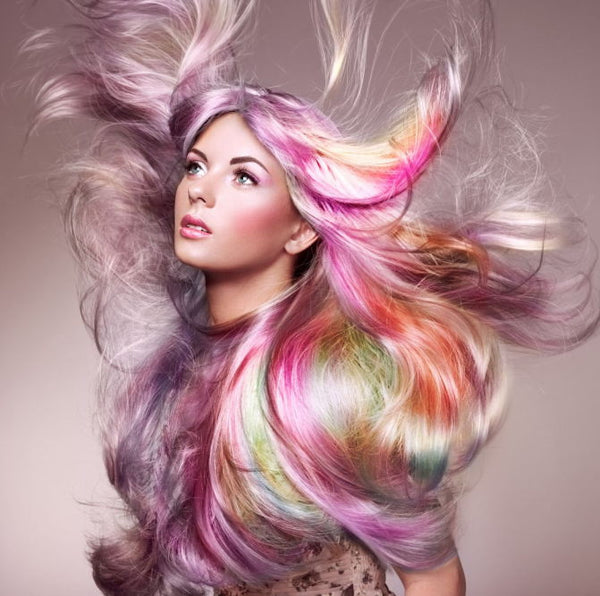
Along the way, we also delved into the critical steps of preparation, maintenance, and addressing common coloring mishaps. Each phase of this journey plays a pivotal role in ensuring a successful coloring experience and the longevity of your extensions.
Coloring hair extensions opens up a realm of creative possibilities, allowing you to experiment with different hues and styles. The beauty of extensions is that they offer a canvas for experimentation without the long-term commitment to your natural hair.
Embarking on the journey of coloring your hair extensions can be exhilarating, yet a bit daunting. It's a creative process that requires a keen understanding to achieve that perfect hue that complements your natural locks.
Here at our salon, we're dedicated to making this journey seamless and rewarding for you. We invite you to book a free consultation with our hair extensions specialists in the Costa del Sol, who are adept at understanding your unique hair type and the look you aim to achieve. What makes our service stand out is the inclusivity of a coloring service within our installation services, ensuring that your extensions are professionally colored to harmoniously blend with your natural hair, creating a stunning, cohesive look.
Your dream of flaunting beautifully colored extensions that accentuate your natural charm is just a consultation away. Schedule your free consultation today, and step closer to experiencing the transformative power of perfectly colored hair extensions.
Now that you’re equipped with the knowledge and tips to color your hair extensions, it’s your turn to dive into this colorful adventure. We’d love to see your transformed extensions! Share your results with us! Your experiences could inspire others and create a community of color enthusiasts.
Should you find yourself entangled in uncertainty, keep your peace. We've designed an FAQ segment specifically to delve into the best practices on how to color your hair extensions, all while aiming to eliminate doubts and field your inquiries comprehensively.


